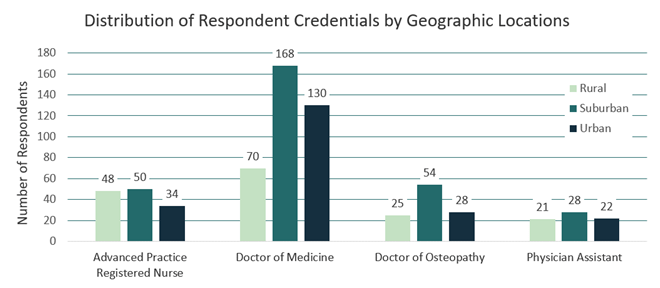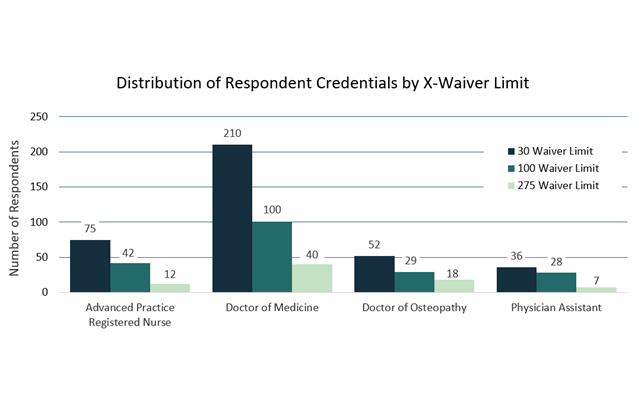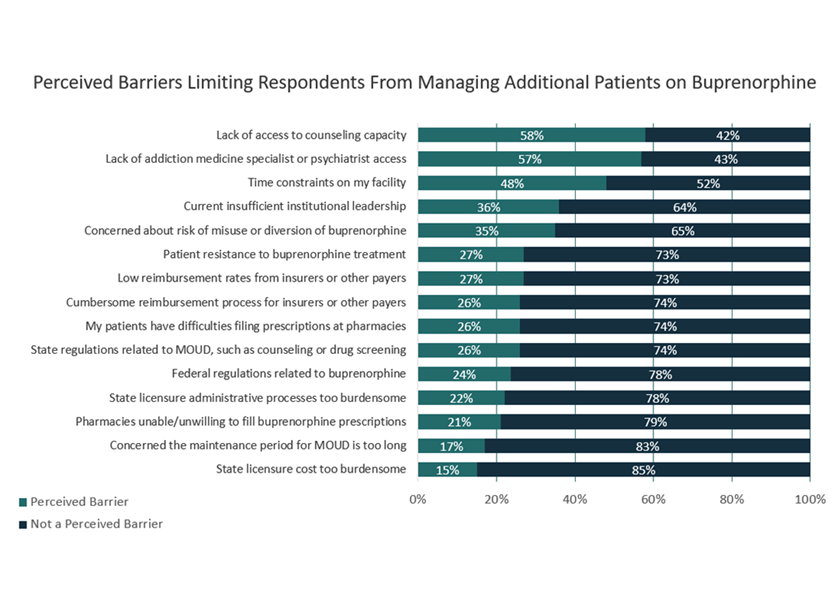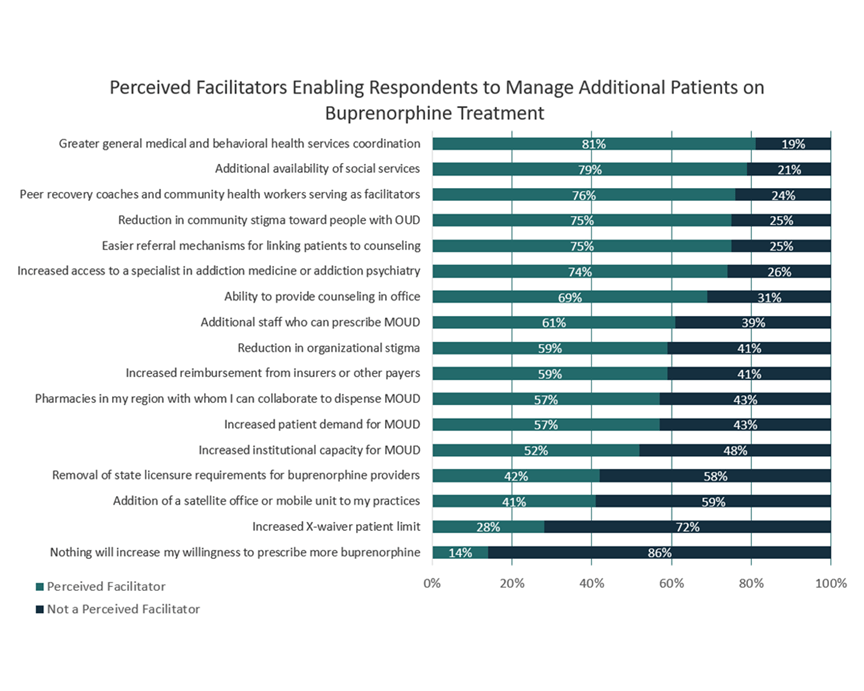The web Browser you are currently using is unsupported, and some features of this site may not work as intended. Please update to a modern browser such as Chrome, Firefox or Edge to experience all features Michigan.gov has to offer.
BUPRENORPHINE PRESCRIBING PRACTICES, BARRIERS, AND FACILITATORS SURVEY RESULTS
Michigan experienced a 24% increase in fatal opioid overdoses from 2019 to 2021. Buprenorphine, a medication for opioid use disorder (OUD), is one of the most effective treatments in preventing opioid overdoses. Expanding access to this lifesaving medication is essential.
In 2021, the Michigan Department of Health and Human Services (MDHHS), in partnership with public health non-profit Vital Strategies, administered a survey to all practitioners in Michigan who had an X-waiver to prescribe buprenorphine treatment for OUD in an office-based setting. This survey explored the buprenorphine treatment prescribing practices, common barriers, and facilitators that could help increase prescribing of buprenorphine in the state of Michigan.
On December 29, 2022, the X-waiver was eliminated as a federal requirement to prescribe buprenorphine for the treatment of OUD. Although the X-waiver was removed, these survey results remain useful for identifying state-specific barriers and facilitators to expanding access to this lifesaving medication.
BUPRENORPHINE PRESCRIBER CHARACTERISTICS
There were 687 participants who completed at least one survey question. Among the survey participants, 54% were doctors of medicine, 19% were advanced practice registered nurses (APRNs), 16% were doctors of osteopathic medicine and 11% were physician assistants. These participants represented 63 out of Michigan’s 83 total counties, and most described the locations in which they practiced as suburban.

PRESCRIBING PRACTICES
Almost 97% of participants had an X-waiver to prescribe buprenorphine treatment and most had a waiver to treat up to 30 patients. Among participants with an X-waiver, about 4 in 5 had prescribed buprenorphine and three-quarters prescribed buprenorphine well below their respective X-waiver patient limits. Most participants reported prescribing both buprenorphine and naltrexone in their practices. The most common primary payment type accepted by survey respondents was Medicaid.
Telemedicine is one tool providers can use to increase access to buprenorphine treatment. Federal flexibilities during the COVID-19 emergency encouraged practitioners who had never used telemedicine for prescribing buprenorphine (83%) to begin using this modality. Among the practitioners who previously never used telemedicine, approximately 49% (n=240) initiated and/or continued using telemedicine during COVID-19.

BARRIERS AND FACILITATORS
Most survey respondents perceived counseling to be a required component of buprenorphine treatment (73%). While half of respondents (54%) reported recommending counseling services to their patients in buprenorphine treatment, 37% reported requiring counseling for their patients in buprenorphine treatment. When respondents were asked to identify barriers to expanding buprenorphine prescribing to additional patients, the most commonly identified barrier was lack of access to counseling capacity.

When exploring practitioners’ perceived facilitators that would enable them to manage additional patients on buprenorphine treatment, the most commonly identified facilitator was greater coordination between medical and behavioral health services.

RECOMMENDATIONS
The report concludes with seven recommendations to address the barriers to expanding access to buprenorphine treatment that were identified in the survey. These recommendations include:
1. Address geographically based barriers to buprenorphine treatment
2. Promote increased buprenorphine prescribing among X-waivered providers
3. Expand telemedicine use during COVID-19 and beyond
4. Adopt the Medication First approach
5. Explore strategies to simplify LARA’s Substance Use Disorder License categories
6. Establish compassionate protocols that encourage treatment retention
7. Increase community outreach
To learn more about the survey results and the report recommendations, access the full report here. If you would like more information about the survey results, please contact Valencia Lyle at lylev@michigan.gov or 517-262-9451.
RESOURCES TO UNDERSTAND MICHIGAN'S SUD ADMINISTRATIVE RULES AND BUPRENORPHINE TREATMENT FOR OPIOID USE DISORDER
Laws and Regulations:
• Public Health Code (PA 368 of 1978)
• Mental Health Code (PA 258 of 1974)
• SUD State Administrative Rules (Proposed changes to these SUD Service Program Administrative Rules)
Additional Resources:
• Medications for Opioid Use Disorder Save Lives
• Medications for Opioid Use Disorder Treatment Improvement Protocol
• Comparative Effectiveness of Different Treatments for OUD